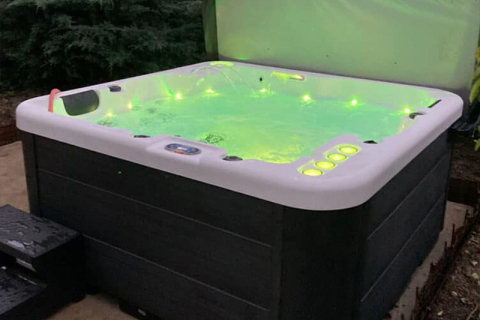
- Home
- >
News
The installation of an ozone generator in an outdoor hot tub is usually combined with a filtration system. When the water passes through the filtration system, the ozone generator injects ozone into the water flow, oxidizes pollutants and bacteria in the water, and then the clean water flows back into the bathtub.
The maximum water temperature of modern hot tubs is usually set at 104°F (40°C), which is the internationally recognized safety upper limit. Most hot tub temperature control systems will force the water temperature to not exceed this standard.
Advantages of bromine: Stable under high temperature conditions Less irritating Continuous sterilization ability Bromine has certain disinfection ability Not susceptible to pH fluctuations Disadvantages of Bromine: Higher cost Not as oxidizing as chlorine Bromine accumulation problem Requires regular maintenance and replenishment Compatibility with devices
Chlorine is a very common disinfectant and is widely used in the water quality maintenance of swimming pools and hot tubs. Chlorine kills bacteria, viruses and other harmful microorganisms in water by releasing hypochlorous acid. The strong oxidizing property of hypochlorous acid can effectively destroy the cell wall of bacteria and the protein structure in the cell, thereby quickly killing bacteria.
Build a physical barrier around the hot tub, such as a fence, windshield or plant barrier, which can effectively reduce the direct impact of strong winds on the tub, thereby reducing heat loss. Especially when used in cold areas or in winter, the windshield design around the tub can significantly improve the insulation effect of the tub.
Muscle tension is one of the main causes of back pain, especially tight back muscles caused by long-term poor sitting posture or overwork. Outdoor hot tubs can effectively relieve muscle tension in the back through a combination of warm water and hydromassage.
When chlorine levels in an outdoor hot tub exceed safe limits, entering the hot tub can cause a number of health problems. Even though chlorine itself is safe in reasonable concentrations, excessive amounts can affect multiple systems in the body.
The water temperature of 38℃ to 40℃ is considered to be the most suitable temperature range for promoting blood circulation. At this temperature, blood vessels dilate and blood can flow to the limbs and muscles faster, thereby accelerating the discharge of metabolic waste (such as lactic acid) and delivering nutrients to damaged muscle parts.
Hot water can dilate blood vessels and promote blood circulation. For people with sciatica, improved blood circulation can provide more oxygen and nutrients to the nerves and compressed areas, accelerating the healing process. Good blood circulation also helps reduce inflammation, further reducing pain and discomfort.
The water in the hot tub is pumped through a filtration system, which removes large particles and impurities, and then passes through an ozone generator, where ozone is injected into the water to disinfect it. The water that has been disinfected by ozone will re-enter the bathtub, keeping the water quality of the entire bathtub clean.
When the concentration of chlorine in a hot tub is too high, the natural barrier function of human skin may be damaged, resulting in dry and sensitive skin, and even itching. Especially for people with sensitive skin or skin diseases, the irritation of chlorine will be more obvious.
Baking soda is not the only substance that can increase the alkalinity of hot tub water. There are other chemicals on the market that are specifically designed for water quality maintenance, such as alkalinity increasers. These products usually contain sodium carbonate (Na₂CO₃), also known as soda ash.












